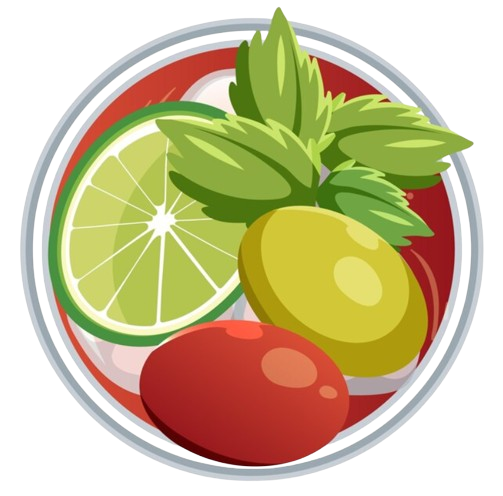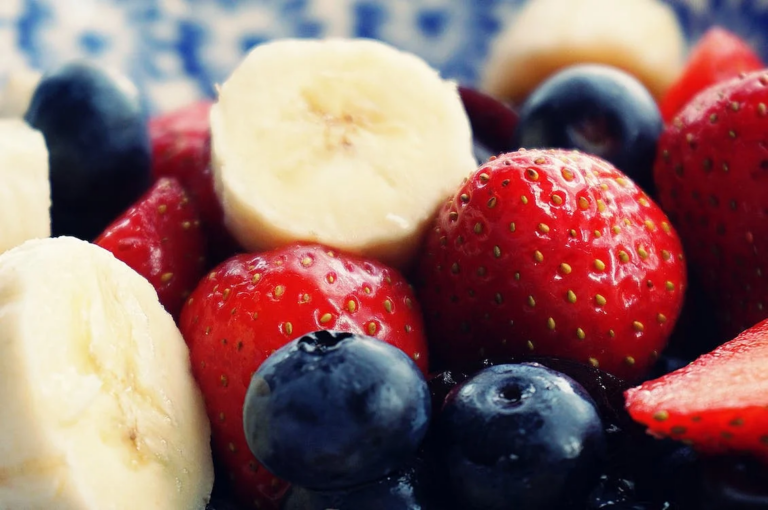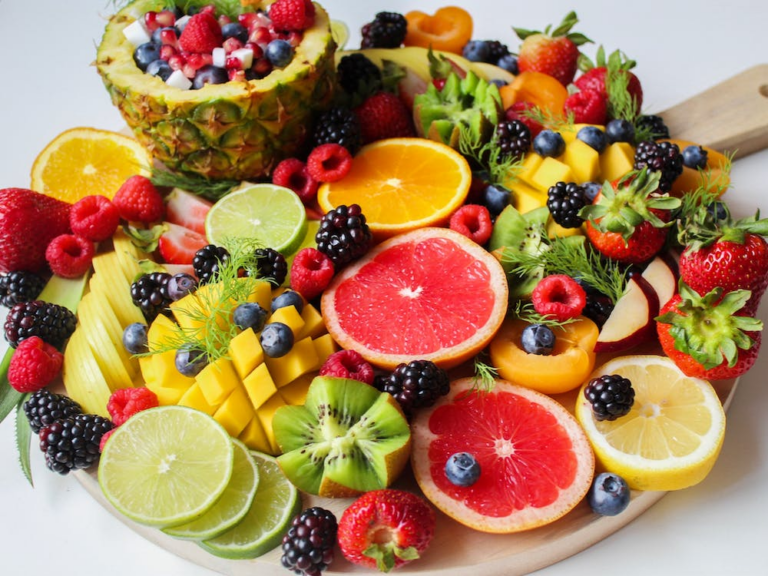The Best Ways to Cook with Fruit: Sweet and Savory Recipes

Fruits, captivating both botanists and culinary enthusiasts, represent a fascinating aspect of nature’s bounty. Emerging from the ovaries of flowering plants, they encompass seeds, showcasing a remarkable journey from plant development to our dining tables.
In the culinary realm, fruits serve as versatile ingredients, lending their array of flavors and textures to an extensive array of dishes. Beyond mere snacking options, they form the foundation of delectable desserts, vibrant sauces, and even find their place harmonizing with savory elements like meats—where their natural acidity adeptly balances richness or enhances delicate flavors. The inherent sweetness of fruits, predominantly sourced from fructose, not only elevates the taste but also adds nutritional value to these delightful offerings.
Fruits come in diverse market forms, from the pristine freshness of whole fruits to their convenient, processed variants like frozen, canned, or dried. This variety is further classified based on the seasons they thrive in and the regions where they flourish. Categorized into summer, winter, and tropical or exotic types, each group possesses its unique charm and flavor profile.
Summer Fruits: These delights, ripened under the warm embrace of summer, encompass a vibrant assortment such as berries, cherries, grapes, melons, peaches, nectarines, plums, and pears. They not only shine in their natural form but also lend their essence to a multitude of culinary creations.
Drupes – The Subcategory: Within the fruit kingdom, there exists a distinctive subcategory known as drupes. Cherries, plums, peaches, nectarines, and apricots are prime examples. This category extends its diversity to include olives, avocados, coconuts, and an array of nuts, like almonds, pistachios, walnuts, pecans, and cashews.
Winter Fruits: As the seasons change and winter sets in, fruits like apples and various citrus fruits—such as oranges, grapefruits, lemons, limes, and tangerines—take the spotlight, offering a different yet equally tantalizing palette of flavors.
Tropical Fruits: Flourishing in the warm embrace of tropical climates, these fruits like dates, kiwis, mangoes, bananas, papayas, pomegranates, guava, star fruit, and passion fruit thrive. Intolerant to frost, they offer a treasure trove of exotic tastes, drawing gastronomic enthusiasts into a world of unique flavors.
Each fruit variety, with its distinct characteristics and seasonal availability, becomes a canvas for culinary exploration. Chefs and home cooks alike are inspired by this vast spectrum of fruits, concocting innovative and flavorful dishes, elevating the artistry in the culinary domain.
Identifying the freshness and quality of fruits and vegetables involves a nuanced understanding of their specific traits. For fruits, the hallmark signs of freshness include a plumpness devoid of bruises, absence of mold, soft spots, or pest damage. Firm leaves, untainted by wilting, also signal freshness. The color and texture should ideally align with the characteristic appearance of the fruit or vegetable. Opting for locally sourced, in-season fruits can significantly heighten the likelihood of obtaining the highest quality produce.
Certain fruits, like bananas, apples, pears, and grapes, grace the market shelves throughout the year. However, their quality, ripeness, and prices fluctuate with the changing seasons. Conversely, fruits like peaches, plums, mangoes, and berries adhere to a specific growing period. Being cognizant of these seasons can ensure access to abundant, higher-quality fruits at relatively lower prices. In the culinary domain, many establishments align their menus with seasonal availability, catering to guests’ preferences for fresh, locally procured produce.
When purchasing fruits, factors like seasonality, the fruit’s ripeness vis-a-vis the intended recipe, and pricing considerations weigh heavily. Furthermore, recipe requirements often specify particular fruit varieties and market forms, dictating the purchasing choices. Skilled handlers proficient in dealing with natural, uncut produce are instrumental, although less adept individuals may resort to processed products. Vendor selection also assumes paramount importance, demanding thorough scrutiny to meet the operation’s unique needs.
Grading systems, devised by the U.S. Department of Agriculture (USDA), ascertain the quality of both fresh and canned fruits. These grading scales hinge on various attributes encompassing size, color, shape, texture, and flaws. Typically, higher-quality fruits fetch higher grades, translating to better prices.
For fresh fruits, USDA grades span from U.S. Extra Fancy, U.S. Fancy, U.S. No. 1, U.S. No. 2, to U.S. No. 3. Notably, U.S. Fancy constitutes the predominant choice for foodservice operations. Lower-grade fruits, while visually less appealing, find their niche in dishes like pies, puddings, jams, and cobblers, where appearance takes a back seat.
Canned fruits adhere to a separate grading system. U.S. Grade A Fancy denotes the pinnacle of quality, reflecting excellent colors, flavors, and uniform sizes and shapes. Following closely are U.S. Grade B Choice fruits, with average overall quality, while U.S. Grade C Standard signifies poorer quality, characterized by bruising, mushiness, and various imperfections.
Storing fruits appropriately is vital in preventing them from spoiling prematurely. Most ripe fruits, barring bananas, maintain their freshness well when stored at temperatures of 41°F or lower. To optimize their shelf life and quality, it’s recommended to designate separate refrigerator space for fruits, distinct from vegetables.
Certain fruits like apples, bananas, and melons emit ethylene gas, a natural plant hormone that triggers the ripening process in some fruits. However, this gas also accelerates spoilage in already ripe fruits and vegetables. To mitigate this, it’s advisable to store ethylene-emitting fruits in sealed containers when separate refrigeration isn’t an option.
The separation of fruits and vegetables during storage isn’t just about ethylene emission; it’s also about minimizing the transfer of odors. Some produce items, such as onions or garlic, release odors that can affect the delicate flavors of nearby dairy items.
Moisture control is another critical aspect in fruit storage. Excessive humidity can expedite spoilage, so it’s essential to employ strategies to manage moisture levels effectively. Using designated fruit bins in refrigerators, delaying the washing of fruits until just before their intended use, and avoiding tightly sealed plastic bags are all tactics to keep moisture at bay. For fruits that require ripening, storing them at a temperature between 65°F to 70°F is optimal. While certain citrus fruits boast longer shelf lives, many restaurants tend to limit the storage of citrus produce items to approximately three weeks.
Cleaning fruits is a pivotal first step in their preparation. Ensuring fruits are free from pathogens and any residues accrued during growth, handling, or sale is essential for safe consumption.
Different fruits necessitate distinct preparation methods, such as skin removal, core extraction, seed and pit removal, zesting, and stem removal. These preparation techniques vary widely based on the fruit’s characteristics, ranging from using peelers or knives for peeling to employing specific tools like cherry pitters for seed removal. Techniques for extracting zest or removing stems also vary based on the fruit type.
Enzymatic browning, a reaction that occurs when fruits are exposed to air, affects fruits differently. Some, like citrus fruits, melons, pineapples, and kiwis, maintain their appealing appearance post-cutting, while others, such as apples, pears, bananas, and peaches, develop an unappealing dark color. Enzymatic browning is a natural defense mechanism in fruits triggered by the enzyme polyphenol oxidase (PPO). To inhibit this process and prevent discoloration, applying acid like lemon juice creates an acidulated bath, which effectively lowers the fruit’s surface pH, slowing down the browning reaction. Acids aid in preserving the fruit’s structural integrity, while alkalis, such as baking soda, can expedite cell breakdown, resulting in softer fruit.
Juicing and Pureeing
Fresh fruits can be juiced and pureed. Handheld juicers can be used to juice citrus fruits. Fruit puree is made by putting prepared fruit (peeled, trimmed, or seeded as necessary) into a blender or food processor. If the fruit is soft and juicy, you can make the puree without adding more liquid.
Preparing Dried Fruits
Dried fruit can be served as is, without any advance preparation. However, when it is an ingredient in a dish or baked item, rehydrate or soften dried fruit before adding it. Put dried fruit in a bowl, cover it with warm or hot liquid, and let it sit until it is ready to use. Be sure to drain all liquid before using the fruit.

Cooking Fruit
Although restaurant and foodservice operations commonly serve fruit raw, many varieties can be cooked. These varieties of fruit can be served hot or cold, as part of the main entree, as a snack, or as a dessert. It is always important to avoid overcooking fruit. Even minimal cooking can make fruit overly soft or mushy. When fruit is cooked with sugar, the sugar is absorbed slowly into the cells, firming the fruit.
Grilling and Broiling
When grilling or broiling fruits, you must cook them quickly to avoid breaking down the fruit’s structure. Pineapples, grapefruit, bananas, and peaches are all good fruits to grill or broil. Cut the fruits into slices, chunks, or halves, and coat them with sugar or honey to add flavor or for caramelization (a browning process). Place fruits to be grilled or broiled on an oiled sheet pan or broiling platter. Only thick fruit slices need to be turned or rotated to heat fully.
Poaching
Poached fruits are fruits that are cooked in simmering liquid. Therefore, use fruits that are firm enough to hold their shape during poaching. This includes plums, apples, peaches, and pears. Apples and pears can be cut into large pieces, but other small fruit should remain whole. Some famous poached fruit dishes include Peach Melba and Pears Belle Helene. Poached fruits are also often used in other desserts as fillings or toppings.
Sauteing
Fruit has a rich, syrupy flavor when sauteed in butter, sugar, and spices. Cherries, bananas, pears, and pineapples are ideal for souteinq. When sauteing fruit, peel, core, and seed the fruit and then cut it into uniform sizes. Dessert fruits can be sauteed with sugar to create a caramelized glaze or syrup, which can be used to fill crepes or as toppings for sponge cakes. Recipes for sauteed fruit that accompanies main entrees usually add onions, shallots, or
garlic to the mixture. One of the most famous sauteed fruit desserts is Bananas Foster.
Fruit sauces can be made from a variety of fruits. Some of the most popular fruit sauces include applesauce, fresh berry coulis (cool-LEE), and compotes. Coulis is a sauce made from a puree of vegetables or fruits that can be served hot or cold. Fruit coulis is most often used on desserts. Raspberry coulis, for example, is especially popular with poached apples.
You may have seen a drizzle of a pureed, sweetened, and reduced fruit coulis (usually made of berries) on dessert plates. Chefs like it because it can be drizzled directly onto the plate to add excitement to the presentation. It can also garnish the dessert itself. A bit of warning: A coulis can also be a distraction from the dessert itself. Coulis should be an artistic way to apply an important ingredient of the dish. Salvaging a less-than-perfect dessert or presentation with a drizzle of berry sauce is not the idea.
Compotes can be made by simmering fresh or dried fruits, such as apricots, currants, and raisins, in a sugar syrup. They are often served either warm or chilled and topped with whipped cream, cinnamon, or vanilla sugar. Fresh
berry sauces can be made of cooked or raw fruit. They can also be used as a base for dessert scuffles or as flavoring for Bavarian creams, buttercreams, and other fillings and icings. Ideally, sauce should be made from fresh fruits, but a good-quality sauce can be made by using unsweetened, frozen fruits.
Fruit sauces are made by cooking the fruit in liquid until the fruit has been broken down. Then a sweetener, such as sugar, honey, or syrup, is added. Once the sauce has cooled, spices and other flavorings are added to give it the finishing touch.
Baking
Fruits can also be baked. When baking fruits, you should choose firm fruits that are whole or cut into large pieces, such as apples, pears, and bananas. Apples, especially the Rome Beauty variety, are the most popular baked fruit because they are easy to prepare. Baked fruits are a healthy and nutritious dessert.
Microwaving
When microwaving fruits, watch the cooking time carefully. It is easy to overcook fresh fruits because they are so tender. Always cover fruits when microwaving them, but leave a small opening from which excess steam can escape. When cooking whole fruits, such as plums or pears, in the microwave, puncture them with a fork in several places to keep them from bursting.

Serving Fruits
Fruit plates and salads ore a popular way to serve fruit. Serve fruit at room temperature to make sure it has the best flavor. Fresh fruit can be served as a garnish with entrees and desserts. For example, use fresh fruit to top cereal or yogurt, add fresh berries on a chocolate cake, or add a slice of melon with an omelet at breakfast.


